Homeowners in some of the country’s wealthiest and cheapest suburbs are reaping the benefits of the housing market recovery, with new OneRoof figures identifying just how much money homeowners have made (or lost) in the last year.
Data from the latest OneRoof-Valocity House Index show property values were up in 60% of the country’s suburbs year-on-year.
The strongest lifts in the year to the end of March 2024 were in higher-value Canterbury suburbs, including Merivale and Fendalton, and low-priced suburbs in West Coast. Mataura, in Gore, however, enjoyed the biggest surge, with its average property value up 19.5% ($50,000) to $306,000.
The biggest dollar change year-on-year was in Merivale, where the average property value jumped $252,000 to $1.594 million, on the back of strong sales activity in the second half of 2023.
Start your property search
According to the OneRoof figures, property values were up year-on-year in 481 New Zealand suburbs with 20 or more settled sales in the last year.
The figures stand in stark contrast to OneRoof’s house price figures for April 2023, which showed only 114 suburbs were up year-on-year (13% of those with 20-plus settled sales).
Christchurch and Queenstown-Lakes were the best performing major metros, with prices up year-on-year in every suburb in both centres. Dunedin and Wellington were close behind, with only a handful of suburbs in both down year-on-year.
Read more:
- 'Heart's desire' heritage mansion sells for $7m - 'anyone else would run a mile'
- Up 7% or barely moving? Why some experts are scrubbing their 2024 house price forecasts
- Cottage with Oscar-winning views excites overseas buyers but local wins the prize
However, the recovery appears to be taking longer in Auckland, Hamilton and Tauranga, where just over half of the suburbs were up.
The average property value in 21 suburbs (2% of the suburbs analysed) had reached or exceeded their post-Covid peak, with another 64 less than $10,000 shy of a full recovery.
The figures also show that property values in every suburb bar one – Totara Park in Manukau – enjoyed five-year growth. Prices in 11 suburbs were more than double what they were in April 2019.
But the figures also point to a challenging quarter for many suburbs that had been a growth trajectory. In the three months to the end of March, property values dropped or didn’t grow at all in 106 of the 481 suburbs that were up year-on-year. For some of the wealthier suburbs the drops were significant.
In the rich-lister beach town of Omaha, on Auckland’s northern fringes, the average property value plunged $92,000 to $2.75m. Homeowners in Ponsonby, Saint Marys Bay and Westmere, in Auckland’s trendy inner-west, saw prices drop by as much as $40,000 (although property values in all four are still massively up on where they were five years ago).
OneRoof editor Owen Vaughan said the quarterly figures highlighted the impact of the sudden rush to market by vendors across the country.
“The total number of homes for sale on OneRoof at the end of March was just over 40,000 – up 13.5% year-on-year. New listings for the month were up 36% nationwide on the same period last year, and up 48% in Auckland,” he said.
“The listings surge has given buyers a chance to pause and gives them more bargaining power than they had six months ago, when much less stock was on the market.”
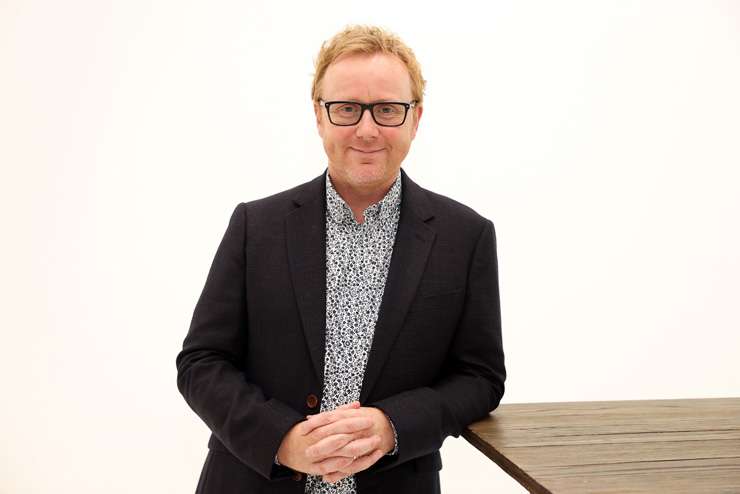
OneRoof editor Owen Vaughan says the market has swung firmly back in favour of buyers. Photo / Fiona Goodall
The spike in listings numbers has put the brakes on the market, with the pace of property value growth for New Zealand slowing to 0.5% ($5000) over the quarter.
Property values in most regions barely grew in the three months to the end of March 2024, and in two locations – Bay of Plenty and Gisborne – values dropped.
Auckland appears to be losing steam despite recording some high-profile sales in March, including New Zealand’s biggest highest auction sale price. The region’s average property value was up only 0.1% ($1000) to $1.33m.
Joining it in the slow lane are Canterbury (up just 0.8% in the three months to the end of March); Hawke’s Bay (+0.6%); Manawatu-Whanganui (+0.8%); Marlborough (+0.4%); Northland (+0.8%); Southland (0.2%); Taranaki (0.7%); and Waikato (no growth).
Otago, Tasman and Wellington all registered value growth of more than 1% over the quarter, but the star performer remains West Coast, where the average property value jumped 6.6% ($29,000) to $468,000.
Helen O’Sullivan, Valocity global CEO of real estate, said uncertainty around the timing of interest rate cuts and muted economic activity were hindering house price growth. “Affordability remains a primary concern for borrowers. So far, most of the market rebound has centred around entry-level segment of the market.
“The proposed changes to the bright-line test and interest deductibility may provide relief to existing investors, but it remains uncertain if the changes will entice investors to enter the market, particularly in the current high-interest rate climate.”
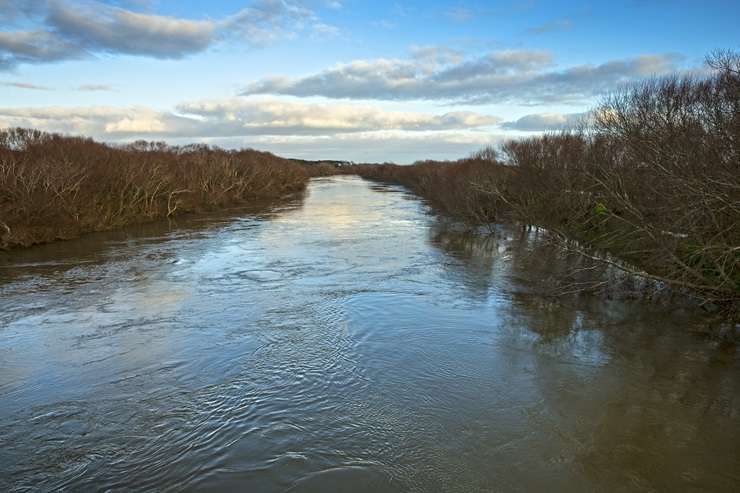
The Mataura river, which runs through Mataura, in Southland. The river is a popular spot for fishing and is a drawcard for buyers in the area. Photo / Getty Images
OneRoof asked agents in the country’s biggest growth suburbs why their markets were performing better than others. They identified affordability, value for money and access to amenity as having a huge influence on the market right now.
In Mataura, Ray White agent Sarah Hoffman said first-home buyers were attracted by the location’s low prices. “Houses in Mataura are sitting in $200,000 to $300,000 price bracket, where in neighbouring Gore first-home buyers are paying around $400,000.”
She said the town was an easy commute to Gore and Invercargill, meaning wider employment opportunities for residents, but was also close to some stunning natural wonders, such as the Catlins. “The Mataura River is really popular for fishing. And you’ve got the slow pace of life. It’s not a rat race like other places.”
Harcourts agent Cameron Bailey told OneRoof the Christchurch suburbs that had recorded double-digit growth year-on-year had been underpriced ever since the earthquakes that struck the city more than a decade ago.
“I think Christchurch has been undervalued in the last few years. Auckland and other parts of New Zealand have enjoyed substantial capital gain during the 2010s whereas the growth in Christchurch had been average.”
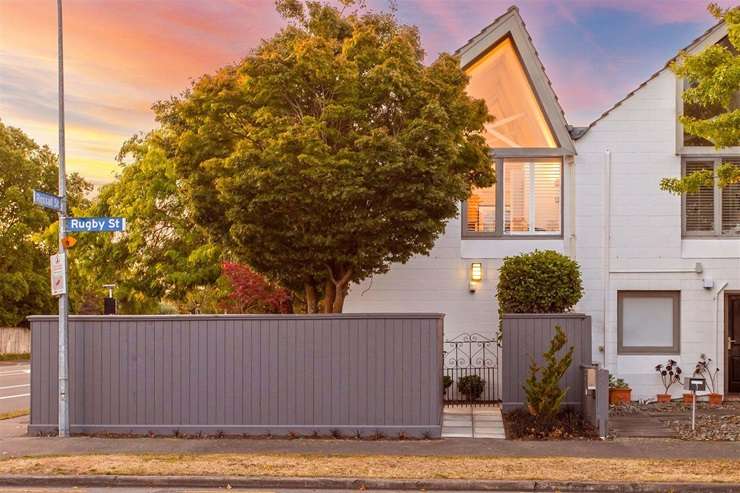
1 Rugby Street, in Merivale, Christchurch, goes to auction on April 4. Photo / Supplied
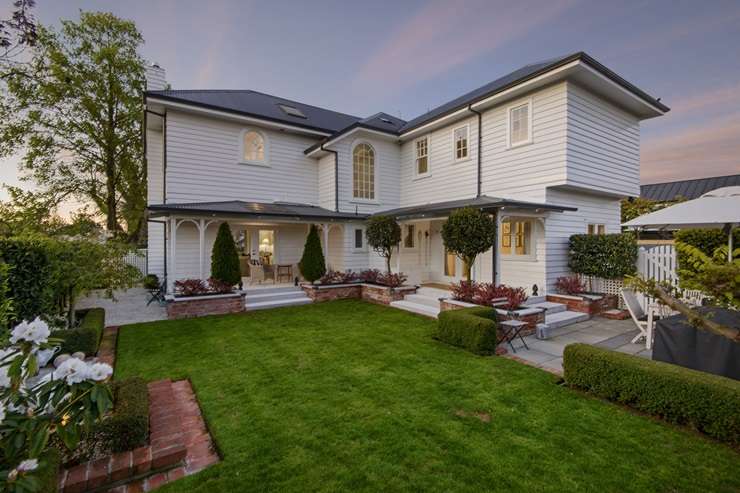
A four-bedroom designer home on Heaton Street, in Merivale, Christchurch, recently sold to a family outside the city for $2.33m. Photo / Supplied
He said Merivale was a standout suburb in the city, largely due to its proximity to the CBD and being in zone for some the city’s best schools.
“The CBD is still not running at full steam but it’s getting closer and people are getting more excited about living close to it, which is why Merivale has moved ahead.”
Bailey noted that Christchurch had become a favourable destination for buyers from other parts of the country.
“We’re finding quite a few people moving to Christchurch from Auckland and Hamilton because it is so attractive. You can get the same for a lot less down here.”
And not every home for sale in Merivale is at the upper end of the city’s price bracket. Bailey expects a two-bedroom Peter Bevan-designed townhouse at 1 Rugby Street in the suburb is likely to sell in the $700,000 to $800,000 range. The 1968-built home had 50 groups through in the first two weeks, he said. “There were investors, first-home buyers and people looking for a Christchurch pad.”
Bayleys agent Adam Heazlewood told OneRoof that many of the buyers looking in Merivale and neighbouring Fendalton were impressed by the quality of the homes there.
He cited as an example of a recent sale on Heaton Street, in Merivale. The four-bedroom Heathcote Helmore-designed home sold for $2.23m in January – more than $300,000 above its 2021 RV. “These types of property always get a lot of focus. It was perfectly presented and sold to a family from the wider Canterbury who were wanting to lessen their commute to school and work.”

Harcourts Gold agent Cameron Bailey: “The CBD is still not running at full steam but it's getting closer and people are getting more excited about living close to it.” Photo / George Heard
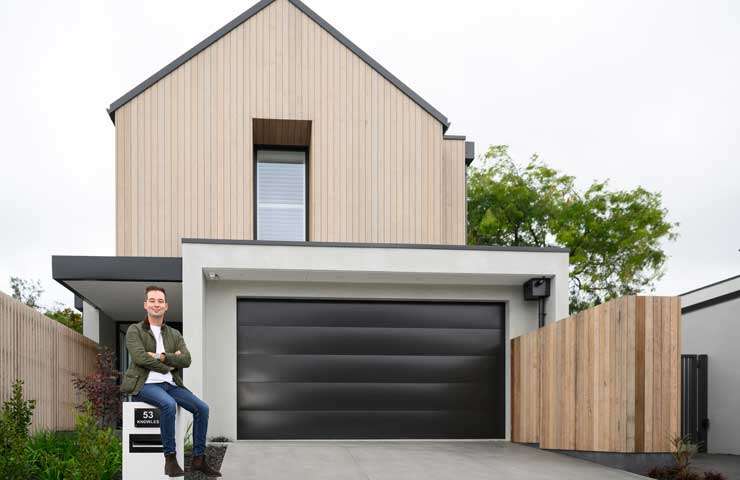
Bayleys agent Adam Heazlewood says a lot of buyers from outside of Christchurch are looking for homes at the upper end of the city's market. Photo / Kai Schwoerer
He agreed with Bailey that outside buyers were driving the market in the city’s top suburbs. “There are a lot of buyers from outside Canterbury buying and moving to Christchurch. A lot from Auckland, Wellington and Otago are looking in the upper end of the market.”
One of the biggest annual risers in the North Island is Murupara, in Bay of Plenty. Its average property value jumped 17.2% ($30,00) to $204,000. Professionals principal and auctioneer Steve Lovegrove told OneRoof that property values in the town had risen off a “very low base”.
“If you go back eight years ago, you could buy a property in Murupara for $30,000. A whole quarter acre with a three-bedroom home on it,” he said, noting that low prices had made the town a “sitting duck for entry-level buyers”.
Professionals agent Fiona Marshall said almost all of the homes that come onto the market in Murupara were being bought by owner-occupiers. Many had moved back from other areas, having sold more expensive homes.
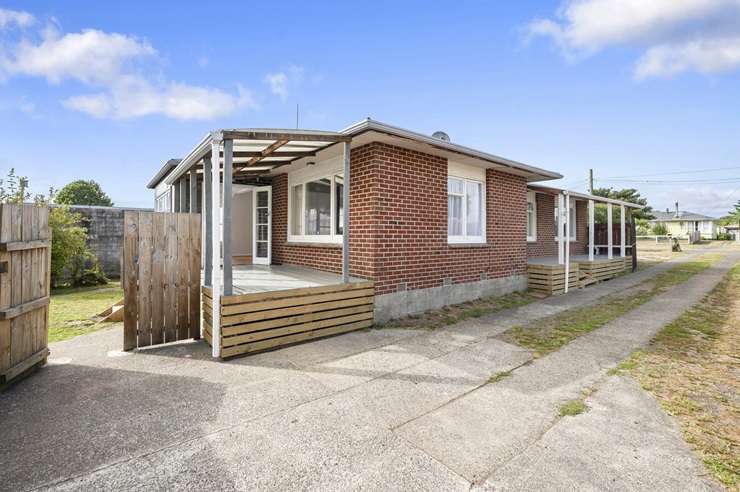
A freshly renovated brick and tile home on Oregon Drive, in Murupara, Bay of Plenty, recently sold for $243,750. Photo / Supplied
“I have one couple who have just sold their home in Rotorua to move back to Murupara and another coming back from Australia. Both have family in Murupara. It’s still a lower socio-economic area, but the buyers have been brought up there and it is home. They want to be back in the community.”
A spate of home renovations was also happening in Murupara. “They [sellers] want a price lift because they have spent money on them. Anything that hasn’t been done up will sell for under $200,000. If they are relatively tidy, it’s $230,000 to $250,000 price range. Anything over the $250,000 market tends to sit on the market for about six months, $250,000 is a bit of a price cap. Over that there is resistance.”
An example of a home that had been improved and sold for a premium price was a three-bedroom brick and tile property on Oregon Drive, Murupara, said Marshall. It sold in November 2023 for $163,500. The buyer did work to the roof, kitchen, bathroom and garden and resold it for $243,750.
* Additional reporting by Diana Clement
- Click here to find more properties for sale













































































